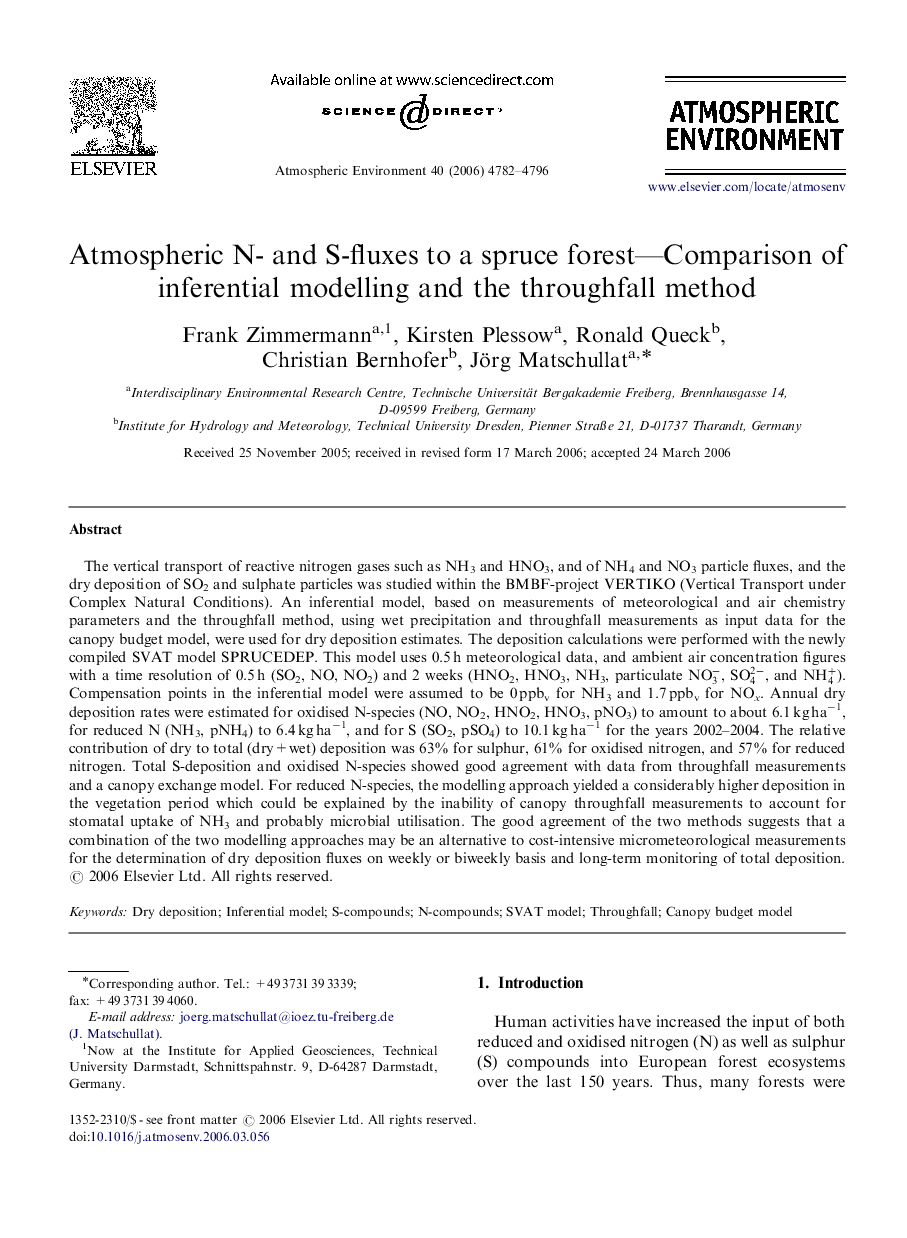| کد مقاله | کد نشریه | سال انتشار | مقاله انگلیسی | نسخه تمام متن |
|---|---|---|---|---|
| 4443917 | 1311215 | 2006 | 15 صفحه PDF | دانلود رایگان |

The vertical transport of reactive nitrogen gases such as NH3 and HNO3, and of NH4 and NO3 particle fluxes, and the dry deposition of SO2 and sulphate particles was studied within the BMBF-project VERTIKO (Vertical Transport under Complex Natural Conditions). An inferential model, based on measurements of meteorological and air chemistry parameters and the throughfall method, using wet precipitation and throughfall measurements as input data for the canopy budget model, were used for dry deposition estimates. The deposition calculations were performed with the newly compiled SVAT model SPRUCEDEP. This model uses 0.5 h meteorological data, and ambient air concentration figures with a time resolution of 0.5 h (SO2, NO, NO2) and 2 weeks (HNO2, HNO3, NH3, particulate NO3-, SO42-, and NH4+). Compensation points in the inferential model were assumed to be 0 ppbv for NH3 and 1.7 ppbv for NOx. Annual dry deposition rates were estimated for oxidised N-species (NO, NO2, HNO2, HNO3, pNO3) to amount to about 6.1 kg ha−1, for reduced N (NH3, pNH4) to 6.4 kg ha−1, and for S (SO2, pSO4) to 10.1 kg ha−1 for the years 2002–2004. The relative contribution of dry to total (dry+wet) deposition was 63% for sulphur, 61% for oxidised nitrogen, and 57% for reduced nitrogen. Total S-deposition and oxidised N-species showed good agreement with data from throughfall measurements and a canopy exchange model. For reduced N-species, the modelling approach yielded a considerably higher deposition in the vegetation period which could be explained by the inability of canopy throughfall measurements to account for stomatal uptake of NH3 and probably microbial utilisation. The good agreement of the two methods suggests that a combination of the two modelling approaches may be an alternative to cost-intensive micrometeorological measurements for the determination of dry deposition fluxes on weekly or biweekly basis and long-term monitoring of total deposition.
Journal: Atmospheric Environment - Volume 40, Issue 25, August 2006, Pages 4782–4796